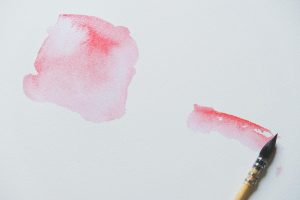Resin art has gained popularity in the art world due to its versatility and unique aesthetics. Working with resin requires careful attention to safety precautions to prevent any potential health risks. One essential tip is to always work in a well-ventilated area to avoid inhaling harmful fumes emitted during the curing process. Ensuring proper ventilation is crucial for the artist’s well-being and overall health. Additionally, wearing protective gear such as gloves, a mask, and goggles is crucial to prevent skin irritation and respiratory issues. It is also recommended to use a respirator with organic vapor filters specifically designed for working with resin. Investing in high-quality resin and pigments is essential for achieving desired results and ensuring the longevity of your artwork. Quality materials not only improve the final outcome of your resin art but also contribute to a safer working environment.
Understanding Resin Art: The Basics
Before diving deeper, it’s important to understand what resin is and why it’s become such a beloved medium among artists. Resin is a synthetic polymer that starts in a liquid form and hardens into a solid through a chemical reaction. This property allows artists to create pieces with a glossy, glass-like finish that can encapsulate objects, colors, and textures in a unique way.
Types of Resin
Epoxy Resin: Known for its clarity, minimal odor, and user-friendly nature, epoxy resin is particularly favored by beginners and is suitable for a wide range of projects, from jewelry to large-scale art pieces.
Polyester Resin: More industrial, this resin type is durable and resistant to environmental factors but emits strong fumes and requires more expertise. It’s often used in automotive and marine applications but can be applied in art for specific purposes.
UV Resin: This is a single-component system that cures under UV light, making it ideal for small projects and quick fixes. It’s perfect for jewelry making and small crafts due to its fast curing time.
Choosing the Right Materials for Your Project
Selecting the appropriate resin type for your project is a foundational step in resin art. Two primary types of resin are commonly used: epoxy resin and polyester resin. Epoxy resin is favored for its clarity, minimal odor, and ease of use, making it ideal for beginners. On the other hand, polyester resin is often used in industrial applications due to its durability and resistance to elements, but it emits strong fumes and requires more expertise to handle safely.
Tips for Selecting Pigments and Additives
When it comes to pigments, consider using mica powders, alcohol inks, or acrylic paints to add color to your resin. Mica powders offer a shimmer effect, alcohol inks provide vibrant transparency, and acrylic paints give a more opaque finish. Always start with small amounts when experimenting with new pigments to understand their interaction with resin.
- Mica Powders: Known for their metallic sheen, these powders are available in a wide range of colors and can be mixed to create custom shades. They are ideal for achieving a pearlescent or metallic finish.
- Alcohol Inks: These are vibrant and can create stunning marbling effects when mixed with resin. They tend to spread quickly, so use sparingly to avoid overpowering your piece.
- Acrylic Paints: These can be mixed into resin to create solid, opaque colors. Use high-quality, non-water-based acrylics to prevent issues with curing.
Setting Up Your Workspace
Creating a dedicated workspace for resin art can significantly improve your workflow and safety. Here are some practical tips:
- Surface Protection: Cover your work area with plastic sheeting or silicone mats to avoid damaging surfaces. Resin can be challenging to remove once it has cured.
- Tool Organization: Keep tools such as mixing sticks, measuring cups, and spatulas within easy reach. Consider using a pegboard or magnetic strip to organize and store metal tools.
- Lighting: Ensure your workspace is well-lit, as this helps in detecting bubbles and imperfections early in the process.
- Temperature Control: Maintaining a consistent room temperature is essential for proper curing. Invest in a space heater or air conditioner to regulate the environment.
Essential Tools and Materials
- Mixing Cups and Sticks: Ensure your mixing cups have precise measurement markings to achieve the correct resin-to-hardener ratio. Wooden sticks are ideal for stirring.
- Heat Gun or Torch: These tools are used to eliminate air bubbles in the resin. A heat gun is generally preferred for more controlled application.
- Silicone Molds: Available in various shapes and sizes, molds allow you to create consistent shapes and are reusable.
Experimenting with Different Techniques and Tools
As you delve deeper into resin art, you may want to experiment with various techniques and tools to expand your artistic horizons. Techniques such as resin casting, resin pouring, and resin molding offer a wide range of creative possibilities that can elevate your artwork to new heights. When experimenting with new techniques, it is important to follow manufacturer instructions carefully to achieve optimal results. Using silicone molds, heat guns, and torches can add unique textures and effects to your resin artwork, offering endless opportunities for creativity and expression. Safety is paramount when working with these tools, so ensure you have a clear understanding of how to use them safely and effectively.
Techniques to Try
- Layering: Create depth by pouring resin in layers. Each layer can be colored or left clear to achieve different visual effects. Allow each layer to cure partially before adding the next to avoid blending.
- Embedding Objects: Incorporate items such as dried flowers, stones, or even photographs into your resin to add a personal touch. Seal porous objects with a clear spray to avoid bubbles.
- Geode Art: Mimic the appearance of natural geodes using glitter, glass shards, and colored resin. This technique has become particularly popular for its stunning results. Use a combination of pigments and textures to achieve a realistic look.
Advanced Techniques
- Resin Marbling: Achieve a marble effect by swirling different colored resins together. Use a stick or skewer to gently manipulate the colors.
- Resin Drip Art: Create abstract patterns by allowing resin to drip over the edges of a canvas. Tilt the canvas to control the direction and flow of the drips.
- Texture Creation: Use tools like combs, sponges, or brushes to create textures in the resin surface before it cures.
Understanding the Curing Process
The curing process is a critical aspect of resin art that requires precision and patience. Resin typically cures through a chemical reaction between the resin and hardener, resulting in a durable and glossy finish that enhances the beauty of your artwork. Properly measuring the resin and hardener ratio is crucial for successful curing. It is recommended to use a digital scale for accurate measurements and to avoid any inconsistencies that could compromise the curing process. Pay close attention to the recommended curing time provided by the manufacturer to ensure that your resin artwork achieves the desired hardness and clarity.
Environmental Factors Affecting Curing
- Temperature: Resin cures best at room temperature (around 70°F/21°C). Temperatures that are too low can slow down the curing process, while high temperatures can cause the resin to cure too quickly, leading to imperfections.
- Humidity: High humidity can result in a cloudy finish. Use a dehumidifier if necessary to maintain optimal conditions.
- Airflow: While ventilation is important, excessive airflow can introduce dust and debris to your curing resin. Consider using a dust cover to protect your work.
Troubleshooting Common Issues
Despite taking all necessary precautions, resin art may encounter common issues such as bubbles, cloudiness, or uneven curing. Addressing these issues promptly can help salvage your artwork and improve the overall quality of your resin creations.
Dealing with Bubbles
To handle bubbles, using a heat gun or torch to gently remove them before the resin sets can help achieve a smooth surface free of imperfections. Be cautious not to hold the heat source too close to the resin, as excessive heat can cause ripples or scorch marks.
- Preventing Bubbles: Warm the resin slightly before mixing to reduce viscosity and allow bubbles to escape more easily. Stir slowly to minimize bubble formation.
- Post-Pour Bubble Removal: After pouring, use a toothpick to pop visible bubbles on the surface. For deeper layers, a heat gun can effectively bring bubbles to the surface.
Preventing Cloudiness
In the case of cloudiness in your resin artwork, it may be due to improper mixing or moisture exposure. By revisiting your mixing process and ensuring thorough blending of the resin components, you can prevent cloudiness and achieve a clear finish. Additionally, ensure your workspace is free from dust and debris, which can settle on the resin before it cures.
- Mixing Technique: Use a slow, steady mixing motion and scrape the sides and bottom of the mixing container to ensure even blending.
- Moisture Control: Avoid adding water-based pigments or additives as they can introduce moisture. Store resin in a dry area to prevent absorption of humidity.
Addressing Uneven Curing
If uneven curing occurs, maintaining consistent temperature and humidity levels in your workspace can promote even curing of the resin, resulting in a flawless final product. Consider using a curing box or tent to create a controlled environment for your projects.
- Curing Environment: Ensure your workspace is free from drafts and temperature fluctuations during the curing process.
- Layer Consistency: When working with layers, ensure each layer is fully cured before adding the next to prevent uneven curing.
Enhancing Your Resin Art Skills
As with any art form, practice and persistence are key to mastering resin art. Here are some ways to continue developing your skills:
- Join Online Communities: Platforms like Instagram, Pinterest, and Facebook have thriving resin artist communities where you can share your work, seek advice, and find inspiration. Participate in challenges and collaborations to expand your network.
- Attend Workshops: In-person or virtual workshops can provide hands-on experience and feedback from experienced artists. Look for courses that focus on specific techniques you wish to master.
- Experiment Regularly: Set aside time to experiment with new techniques or materials without the pressure of creating a perfect piece. This can lead to unexpected discoveries and growth.
- Document Your Progress: Keep a journal or portfolio of your projects, noting the materials, techniques, and results. This can help track your improvement and inspire future pieces.
Expanding Your Artistic Vision
Once you’re comfortable with basic techniques, consider expanding your artistic vision by incorporating resin art into other mediums or exploring new styles.
Mixed Media Exploration
- Combining with Woodwork: Create resin river tables by combining wood slabs with resin to mimic the appearance of flowing water.
- Incorporating Textiles: Use fabric as a base or embed textiles within resin to add texture and dimension.
- Metal and Stone: Blend resin with metal or stone elements to create industrial or organic-inspired pieces.
Creative Inspirations
- Nature-Inspired Designs: Draw inspiration from natural elements like water, rocks, and foliage to create organic designs.
- Abstract Expressionism: Experiment with bold colors and fluid forms to create abstract art that captures emotion and movement.
- Narrative Art: Tell a story through your resin pieces by embedding meaningful objects or using symbolism in your designs.
Resin art is a rewarding and dynamic medium that offers endless possibilities for creativity. By prioritizing safety, understanding the materials and processes, and continuously seeking knowledge and inspiration, you can create stunning resin pieces that reflect your unique artistic vision. Whether you’re a beginner or an experienced artist, the journey with resin art is one of exploration and surprise, each pour bringing a new opportunity to learn and innovate.



